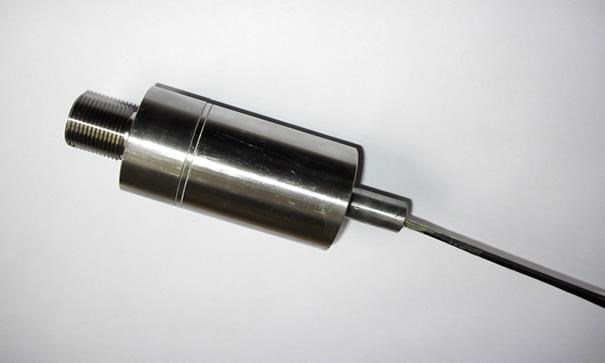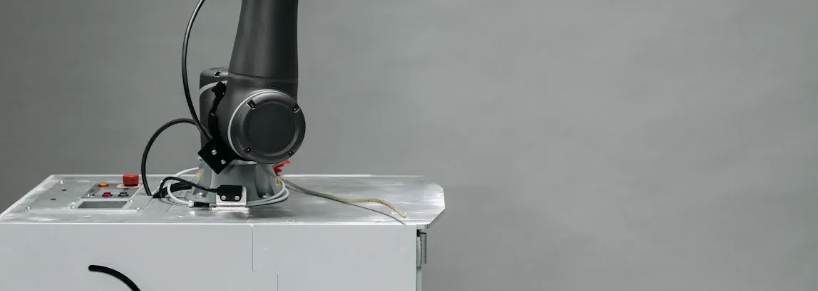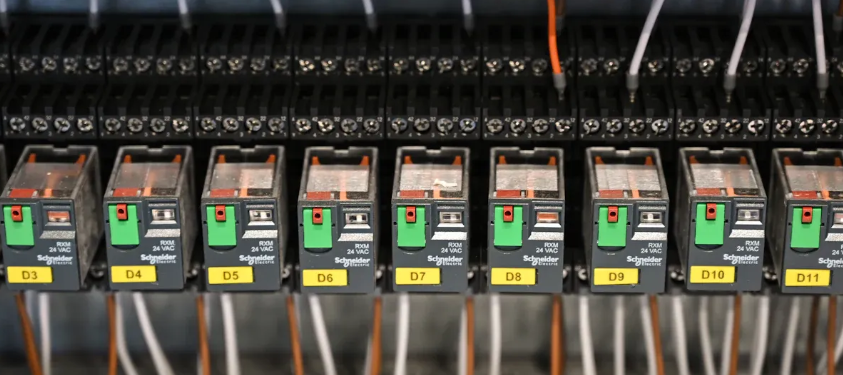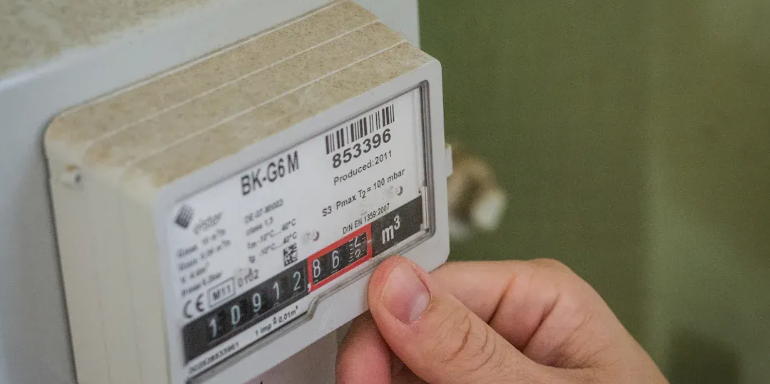What is a Fiber Optic Sensor?

How Optical Fiber Sensor work?
Catalog
Ⅰ Introduction
A fiber optic sensor is a sensor that converts the state of the measured object into a measurable optical signal. The working principle of the fiber optic sensor is to send the light beam incident from the light source to the modulator through the optical fiber, and interact with the external measured parameters in the modulator so that the optical properties of the light such as light intensity, wavelength, frequency, phase, and polarization state will be changed. The light beam becomes the modulated optical signal, which is sent to the photoelectric device through the optical fiber. The measured parameter will be obtained after being demodulated. In the whole process, the light beam is introduced through the optical fiber and then exits after passing through the modulator. The function of the optical fiber is first to transmit the light beam, and secondly to function as the optical modulator.
Fiber optic sensors have become increasingly important in modern sensing technology, with applications ranging from structural health monitoring to medical diagnostics. As of 2025, the global fiber optic sensor market has experienced significant growth, driven by advances in telecommunications, smart infrastructure, and industrial automation. These sensors offer unique advantages including immunity to electromagnetic interference, high sensitivity, and the ability to operate in harsh environments.
Ⅱ Working Principle
The basic working principle of the fiber optic sensor is to send the light from the light source to the modulator through the fiber, so that the measured parameter interacts with the light entering the modulation area, resulting in changes to the optical properties of the light (such as light intensity, wavelength, frequency, phase, and polarization state), called the modulated signal light. The system then uses the influence of the measured parameter on the light transmission characteristics to complete the measurement. There are two main measuring principles for fiber optic sensors.

Fiber optic sensor
1. The principle of physical fiber optic sensor
Physical fiber sensors use the sensitivity of optical fiber to environmental changes and convert the input physical quantity into a modulated optical signal. Their working principle is based on the optical modulation effect of the optical fiber, that is, when external environmental factors such as temperature, pressure, electric field, or magnetic field change, the light transmission characteristics, such as phase and light intensity, will change accordingly.
Therefore, if the change in the optical phase and light intensity through the optical fiber can be measured, the change in the measured physical quantity can be determined. This type of sensor is also known as an intrinsic or functional fiber-optic sensor. The beam from a laser point light source diffuses into parallel waves and is divided into two paths by the beam splitter: one is the reference optical path and the other is the measuring optical path. External parameters (temperature, pressure, vibration, etc.) cause changes in the length of the fiber and changes in the optical phase, thereby generating different amounts of interference fringes. By counting the fringe movements, we can measure temperature or pressure with high precision.
2. The principle of the structured optical fiber sensor
The structured optical fiber sensor is a measurement system composed of a light detection element (sensitive element), an optical fiber transmission loop, and a measurement circuit. In this configuration, optical fiber is only used as the propagation medium of light, so it is also called an extrinsic, light transmission type, or non-functional type optical fiber sensor. The sensing element is external to the fiber, and the fiber simply guides light to and from the sensing region.
Ⅲ Performance and features
Optical fiber has many excellent properties, such as resistance to electromagnetic and atomic radiation interference, mechanical properties of small diameter, soft quality, and lightweight construction; excellent insulation and electrical performance without induction; and chemical resistance to water, high temperature, and corrosion. It can function in places where humans cannot reach (such as high-temperature areas) or areas that are harmful to people (such as nuclear radiation zones). It can also exceed human physiological boundaries and receive external information that cannot be sensed by conventional means.
The advantages of fiber optic sensors compared with traditional sensors include: fiber optic sensors use light as the carrier of sensitive information and optical fiber as the medium to transmit that information. They have the characteristics of optical fiber and optical measurement with a series of unique advantages: excellent electrical insulation performance, strong resistance to electromagnetic interference, non-invasive measurement capability, high sensitivity, ease of implementing long-distance monitoring of measured signals, corrosion resistance, explosion-proof operation, flexible optical path configuration, and easy integration with computer systems.
Features of fiber optic sensors are as follows:
1. High sensitivity and precision measurement capabilities
2. Geometric shape has multiple aspects of adaptability and can be made into any shape of fiber optic sensor
3. Can be manufactured to sense various physical information (acoustic, magnetic, temperature, rotation, etc.)
4. Can be used safely in high voltage, electrical noise, high temperature, corrosive, or other harsh environments
5. Inherently compatible with fiber optic telemetry systems
6. Due to the use of prisms in the reflector, the detection performance is higher and more reliable than general reflective photoelectric sensors
7. Compared with separated photoelectric sensors, the circuit connection is simpler and more convenient
8. Embedded design makes installation easier and more versatile
9. Used for transmission of digital signals such as telephone and Internet broadband communications
10. Detection of banknotes, cards, coins, passbooks, etc. used in vending machines, financial terminal equipment, and banknote counters
11. Used for product positioning, counting, and identification in automated equipment
12. Multiplexing capability allowing multiple sensors on a single fiber
13. Distributed sensing for continuous monitoring over long distances
Ⅳ Classification
According to the modulation form of the subject to be measured, fiber optic sensors can be divided into intensity modulation type, polarization state type, phase type, and frequency type. According to whether light interferes, they can be divided into interferometric type and non-interferometric type. According to whether they can continuously monitor the measurement with increasing distance, they can be divided into distributed and point sensors. According to the role of optical fiber in the sensor, they can be divided into Functional Fiber (abbreviated as FF) or intrinsic sensors, and Non-Functional Fiber (abbreviated as NFF) or extrinsic sensors, also called light-transmitting sensors.
1. Functional fiber sensor
The functional fiber sensor uses the optical fiber itself as a sensitive element by utilizing the characteristics of the optical fiber. The measured parameter modulates the light transmitted in the fiber, changing the intensity, phase, frequency, or polarization state of the transmitted light. The demodulated signal is used to obtain the measured parameter. The optical fiber is not only a light-guiding medium but also a sensitive component. The light is measured and modulated within the optical fiber, and multi-mode optical fiber is commonly used for these applications.
Advantages: Compact structure and high sensitivity with direct interaction between the measurand and the fiber.
Disadvantages: Special fiber may be required, potentially increasing cost.
Typical examples: Fiber optic gyroscopes, fiber optic hydrophones, and interferometric sensors.
2. Non-functional fiber sensor
Non-functional optical fiber sensors use separate sensitive components to sense the measured changes. Optical fibers are only used as information transmission media, and single-mode optical fibers are often employed. The optical fiber only plays the role of a light guide, and the light irradiated on the external sensing element is modulated by the measurement.
Advantages: The optical fiber provides electrical isolation and data transmission, and the signal transmitted by the optical fiber is not affected by electromagnetic interference. The sensing element can be optimized independently of the fiber. Most practical fiber optic sensors deployed today are non-functional optical fiber sensors.
Fiber optic sensors represent advanced technology that has matured significantly since their emergence. They can be used to measure a wide variety of physical quantities, such as sound fields, electric fields, pressure, temperature, angular velocity, acceleration, strain, displacement, and chemical concentrations. They can also complete measurement tasks that are difficult or impossible to achieve with existing conventional measurement technologies. In confined spaces, in strong electromagnetic interference environments, and in high voltage conditions, fiber optic sensors have demonstrated unique and superior capabilities. There are now more than 100 different types of optical fiber sensors, which are broadly divided into intrinsic fiber optic sensors and extrinsic sensors using optical fibers.
Intrinsic fiber sensors mean that the optical fiber itself directly receives the measurement from the external environment. The external measured physical quantity can cause changes in the length, refractive index, and diameter of the measuring fiber arm, thereby causing changes in the amplitude, phase, frequency, and polarization of light transmitted in the fiber. The light transmitted by the measuring arm interferes (or is compared) with the reference light of the reference arm, causing the phase (or amplitude) of the output light to change. Based on this change, the measured parameter can be detected. The phase of light transmission in the fiber is highly sensitive to external influences, and interferometry can be used to detect physical quantities corresponding to phase changes as small as 10⁻⁴ radians. Using the flexible winding properties and low loss of optical fiber, very long optical fibers can be coiled into compact fiber coils to increase the effective sensing length and obtain higher sensitivity.
An optical fiber acoustic sensor is one type of intrinsic fiber sensor. When the fiber is subjected to very small external forces, it will bend slightly, and its light transmission capacity will change significantly. Sound is a type of mechanical wave, and its effect on the optical fiber causes the fiber to experience force and bending; the intensity of the sound can be determined by measuring the bending. Fiber optic gyroscopes are also intrinsic optical fiber sensors. Compared with ring laser gyroscopes, fiber optic gyroscopes offer high sensitivity, small size, and lower cost. They can be used in high-performance inertial navigation systems for aircraft, ships, missiles, and autonomous vehicles.
3. Fiber Bragg Grating Sensor

The working principle of fiber Bragg grating sensor
Fiber Bragg Grating Sensors (FBG sensors) are among the most widely used and extensively researched fiber sensors. These sensors can change the wavelength of the reflected light wave according to changes in ambient temperature and strain. Fiber Bragg Gratings are created using a holographic interference method or a phase mask method to expose a short length of photosensitive fiber to a light wave with a periodic intensity distribution. In this way, the optical refractive index of the optical fiber is permanently changed according to the intensity of the irradiated light wave. The periodic change in refractive index created by this method is called a fiber Bragg grating.
When a broadband light beam propagates through a fiber Bragg grating, each small section of fiber with modified refractive index will reflect only a specific wavelength of light. This wavelength is called the Bragg wavelength. This characteristic allows Fiber Bragg gratings to reflect only light waves of a specific wavelength, while light waves of other wavelengths are transmitted through. The Bragg wavelength shifts in response to changes in temperature and strain, making FBG sensors ideal for structural health monitoring, oil and gas applications, and aerospace systems.

Structure of fiber Bragg grating sensor
According to the role of optical fiber in fiber optic sensors, they can be divided into two types: intrinsic (sensing type) and extrinsic (light transmission type). The optical fiber in intrinsic sensors not only transmits light but also serves as the photoelectric sensitive element. Due to the influence of the external environment on the optical fiber itself, the physical quantity to be measured acts on the sensor through the optical fiber, modulating the properties of the optical waveguide (light intensity, phase, polarization state, wavelength, etc.). Intrinsic fiber optic sensors are divided into intensity modulation systems, phase modulation type, polarization state modulation type, and wavelength modulation type.
Extrinsic fiber optic sensors measure the optical signal modulated by the measured object after input into the optical fiber, and then perform optical signal processing at the output end to complete the measurement. This type of sensor requires an additional photosensitive element that is sensitive to the physical quantity to be measured. The light-transmitting element must be combined with a sensitive element that can modulate the light transmitted by the optical fiber to form a complete sensing system.
The lightweight, durable, and long-term stable nature of fiber optic sensors makes them ideal for application to internal stress and strain detection in various building materials such as steel structures and concrete in construction and civil engineering projects.
Ⅴ Applications
Fiber optic sensors can be used for displacement, vibration, rotation, pressure, bending, strain, velocity, acceleration, electric current, magnetic field, voltage, humidity, temperature, sound field, flow rate, concentration, pH value, and strain measurement of physical quantities. The application range of fiber optic sensors is very wide, covering almost all important fields in the national economy, national defense, and people's daily lives. They can be used safely and effectively in harsh environments, solving technical problems that have existed in many industries for many years. The main applications are manifested in the following areas:
1. Civil Engineering and Infrastructure Monitoring: The application of interferometric sensors, fiber Bragg grating sensors, and distributed fiber optic sensors in bridges, dams, tunnels, and buildings for structural health monitoring. Fiber optic sensors can be embedded in concrete, carbon fiber reinforced plastics, and various composite materials to detect stress relaxation, construction stress, and dynamic load stress, enabling real-time assessment of structural performance during both short-term construction phases and long-term operation. Modern smart cities increasingly rely on fiber optic sensor networks for continuous infrastructure monitoring.

Fiber Bragg Grating Pressure Sensor
2. Power Systems and Energy: In power systems, parameters such as temperature, current, and voltage need to be measured. Examples include temperature detection in the stator and rotor of high-voltage transformers and large motors. Because conventional electrical sensors are susceptible to interference from electromagnetic fields, they cannot be used in such applications; only fiber optic sensors can operate reliably. Distributed optical fiber temperature sensors represent a technology for real-time measurement of spatial temperature field distribution. These systems not only have the advantages of general optical fiber sensors but also possess temperature sensing capability at various points along the fiber. Using this feature, the temperature at various points within several kilometers along the fiber can be continuously measured in real time. The positioning accuracy can reach the meter level, and the measurement accuracy can achieve precision of 0.1°C or better. These systems are extensively used in power cable monitoring, oil and gas pipeline monitoring, and fire detection systems.
3. Oil and Gas Industry: Fiber optic sensors are deployed in downhole monitoring for temperature and pressure measurements in oil wells, providing critical data for reservoir management and production optimization. Distributed acoustic sensing (DAS) technology using fiber optics has revolutionized pipeline monitoring and seismic surveillance.
4. Aerospace and Aviation: Fiber optic sensors are used for structural health monitoring of aircraft, spacecraft, and satellites. Their lightweight nature and immunity to electromagnetic interference make them ideal for aerospace applications. They monitor strain, temperature, and vibration in critical components.
5. Medical Applications: Fiber optic sensors are used in minimally invasive medical procedures, including catheter-based pressure and temperature sensing, as well as in medical imaging systems. Their biocompatibility and small size enable new diagnostic and therapeutic approaches.
6. Transportation: Railway monitoring systems use fiber optic sensors for track monitoring, train detection, and structural health monitoring of railway infrastructure. In automotive applications, fiber optic sensors are being explored for autonomous vehicle systems and advanced driver assistance systems (ADAS).
7. Environmental Monitoring: Distributed fiber optic sensors are deployed for environmental monitoring applications including leak detection, perimeter security, and seismic monitoring. They provide continuous, real-time data over large geographic areas.
8. Manufacturing and Industrial Automation: Fiber optic sensors are used in industrial automation for position sensing, quality control, and process monitoring in manufacturing environments where electromagnetic interference would compromise conventional sensors.
In addition, fiber optic sensors are used in rocket propulsion systems for thrust measurement and in harsh environment monitoring where conventional sensors cannot survive. Optical fiber sensing technology has the significant advantages of broadband capacity, large information capacity, long-distance transmission capability, and multi-parameter, distributed, and low energy consumption sensing. Optical fiber sensing continues to absorb new technologies and devices from optical fiber communications, and various fiber optic sensors are expected to be increasingly widely deployed in Internet of Things (IoT) applications, smart city infrastructure, and Industry 4.0 manufacturing systems.
Ⅵ Recent Advances and Future Trends
As of 2025, fiber optic sensor technology continues to advance rapidly with several notable developments:
1. Artificial Intelligence Integration: Machine learning algorithms are increasingly being integrated with fiber optic sensing systems to enable predictive maintenance, pattern recognition, and automated anomaly detection in structural health monitoring and industrial applications.
2. Quantum Sensing: Quantum-enhanced fiber optic sensors are emerging, offering unprecedented sensitivity for applications in fundamental physics research, gravitational wave detection, and ultra-precise navigation systems.
3. Advanced Materials: New photonic crystal fibers, hollow-core fibers, and specialty optical fibers are expanding the capabilities of fiber optic sensors for gas sensing, biochemical detection, and extreme environment monitoring.
4. Miniaturization and Integration: Advances in photonic integrated circuits are enabling more compact, cost-effective fiber optic sensor interrogation systems, making the technology more accessible for widespread deployment.
5. 5G and Beyond: The rollout of 5G networks and development of 6G technologies are creating new opportunities for fiber optic sensors in telecommunications infrastructure monitoring and distributed sensing networks.
6. Sustainability Applications: Fiber optic sensors are playing an increasing role in environmental monitoring, renewable energy systems (wind turbine monitoring, solar panel optimization), and carbon capture and storage monitoring.
Ⅶ Frequently Asked Questions (FAQs)
Q1: What is the main difference between intrinsic and extrinsic fiber optic sensors?
A1: In intrinsic (functional) fiber optic sensors, the optical fiber itself acts as the sensing element, and the measured parameter directly modulates the light within the fiber. In extrinsic (non-functional) fiber optic sensors, the fiber only serves as a light transmission medium, and a separate external sensing element detects the measured parameter.
Q2: How do fiber Bragg grating sensors work?
A2: Fiber Bragg grating (FBG) sensors contain a periodic variation in the refractive index of the fiber core. This grating reflects a specific wavelength of light (Bragg wavelength) while transmitting others. When temperature or strain changes, the grating period changes, causing a shift in the reflected wavelength that can be measured to determine the physical parameter.
Q3: What are the main advantages of fiber optic sensors over conventional electronic sensors?
A3: Fiber optic sensors offer immunity to electromagnetic interference, electrical isolation, ability to operate in harsh environments (high temperature, corrosive, explosive), lightweight and compact design, multiplexing capability (multiple sensors on one fiber), and long-distance signal transmission without degradation.
Q4: Can fiber optic sensors be used for distributed sensing?
A4: Yes, distributed fiber optic sensors can provide continuous measurements along the entire length of the fiber, which can extend for many kilometers. Technologies such as Distributed Temperature Sensing (DTS), Distributed Acoustic Sensing (DAS), and Distributed Strain Sensing (DSS) enable monitoring of temperature, vibration, and strain at thousands of points along a single fiber.
Q5: What is the typical lifespan of fiber optic sensors?
A5: Fiber optic sensors typically have long operational lifespans, often exceeding 20-25 years when properly installed and protected. The glass fiber itself is highly stable, and the main factors affecting longevity are the protective coatings, packaging, and environmental conditions. FBG sensors embedded in structures can last for the lifetime of the structure itself.
Q6: Are fiber optic sensors expensive compared to traditional sensors?
A6: While the initial cost of fiber optic sensors and interrogation systems can be higher than conventional sensors, the total cost of ownership is often lower due to reduced installation costs (single fiber can host multiple sensors), minimal maintenance requirements, long lifespan, and elimination of electromagnetic interference issues. For distributed sensing applications, fiber optic systems are typically more cost-effective than deploying thousands of individual electronic sensors.
Q7: Can fiber optic sensors measure multiple parameters simultaneously?
A7: Yes, fiber optic sensors can measure multiple parameters simultaneously. For example, FBG sensors are inherently sensitive to both temperature and strain, and with proper calibration or additional reference sensors, both parameters can be discriminated. Multiple FBG sensors at different wavelengths can be multiplexed on a single fiber to measure different parameters or the same parameter at different locations.
Q8: What is the maximum distance over which fiber optic sensors can transmit data?
A8: The transmission distance depends on the type of fiber optic sensor system. For point sensors using standard telecommunications fiber, distances of 40-80 km are typical without amplification. Distributed sensing systems can monitor fiber lengths of 40-50 km for DTS systems, and up to 100+ km for advanced DAS systems using optical amplification. The actual distance also depends on the required spatial resolution and measurement accuracy.
Recommended Articles:
Types and Application of Position Sensors
Introduction to Wearable Sensors
Article Update Information:
This article was originally published in 2020 and has been comprehensively updated in October 2025 to reflect the latest advances in fiber optic sensor technology, including new applications in AI-integrated systems, quantum sensing, and Industry 4.0. Information on recent market developments, emerging technologies, and expanded application areas has been added. A new section on recent advances and future trends has been included, along with a comprehensive FAQ section to address common questions about fiber optic sensors. All technical specifications and industry standards have been verified to be current as of 2025.
How does a fiber optic sensor work?
In a fiber-optic sensing system, the emitter and the receiver share a single housing. The fiber-optic cable that is connected to the amplifier allows the sensor to reach areas inaccessible to standard photoelectric sensors. The sensor emits, receives, and converts the light energy into an electrical signal.
What are fiber optic sensors used for?
Optical fibers can be used as sensors to measure strain, temperature, pressure and other quantities by modifying a fiber so that the quantity to be measured modulates the intensity, phase, polarization, wavelength or transit time of light in the fiber.
What is the classification of fiber optic sensors?
Based on the operating principle or modulation and demodulation process, a optical fiber sensor can be classified as intensity, a phase, a frequency, or a polarization sensor. All these parameters may be subject to change due to external perturbations.
What are the characteristics of optical fiber sensors?
Excellent environmental resistance. Since no electric current flows through the optical fibre cable, the sensor is unaffected by electrical noise. The heat-resistant type fibre unit enables detection in high temperature environments.
What are the 3 basic components of an optic fiber system?
The three basic elements of a fiber optic cable are the core, the cladding and the coating.
 The Key Role of Electronic Components in IoT DevicesUTMEL01 September 20234805
The Key Role of Electronic Components in IoT DevicesUTMEL01 September 20234805The article discusses the pivotal role of electronic components in Internet of Things (IoT) devices. IoT devices work by capturing real-world data using sensors, processing it through a microcontroller, and then sending it to the cloud for further analysis.
Read More How to Identify the Perfect Proximity Sensor for Your ApplicationUTMEL19 July 2025640
How to Identify the Perfect Proximity Sensor for Your ApplicationUTMEL19 July 2025640Find the best proximity sensors for your project by evaluating material, sensing range, environment, and system needs to ensure optimal performance and reliability.
Read More Trusted Vibration Sensors for Homeowners and Industry ProfessionalsUTMEL17 July 2025445
Trusted Vibration Sensors for Homeowners and Industry ProfessionalsUTMEL17 July 2025445Compare top vibration sensors for home and industrial use. Find trusted options for security, predictive maintenance, and equipment protection.
Read More Wiring and Mounting Photoelectric Sensors in 2025UTMEL15 July 2025621
Wiring and Mounting Photoelectric Sensors in 2025UTMEL15 July 2025621Wire and mount photoelectric sensors in 2025 with step-by-step safety, wiring, and alignment tips for reliable installation and optimal sensor performance.
Read More Essential Tips for Picking the Best Gas SensorUTMEL15 July 20251491
Essential Tips for Picking the Best Gas SensorUTMEL15 July 20251491Find out how to select gas sensors by matching target gases, environment, and compliance needs for reliable and accurate gas detection in any setting.
Read More
Subscribe to Utmel !
![EPM8CH008]() EPM8CH008
EPM8CH008Menda
![ETM80SB275]() ETM80SB275
ETM80SB275Menda
![EK75DT005L]() EK75DT005L
EK75DT005LMenda
![EPM80CS150]() EPM80CS150
EPM80CS150Menda
![16104]() 16104
16104FLEx
![EBM6CP302]() EBM6CP302
EBM6CP302Menda
![EBM60TZ015]() EBM60TZ015
EBM60TZ015Menda
![19787]() 19787
19787Festo
![ETM80B325]() ETM80B325
ETM80B325Menda
![ET80TZ160]() ET80TZ160
ET80TZ160Menda





